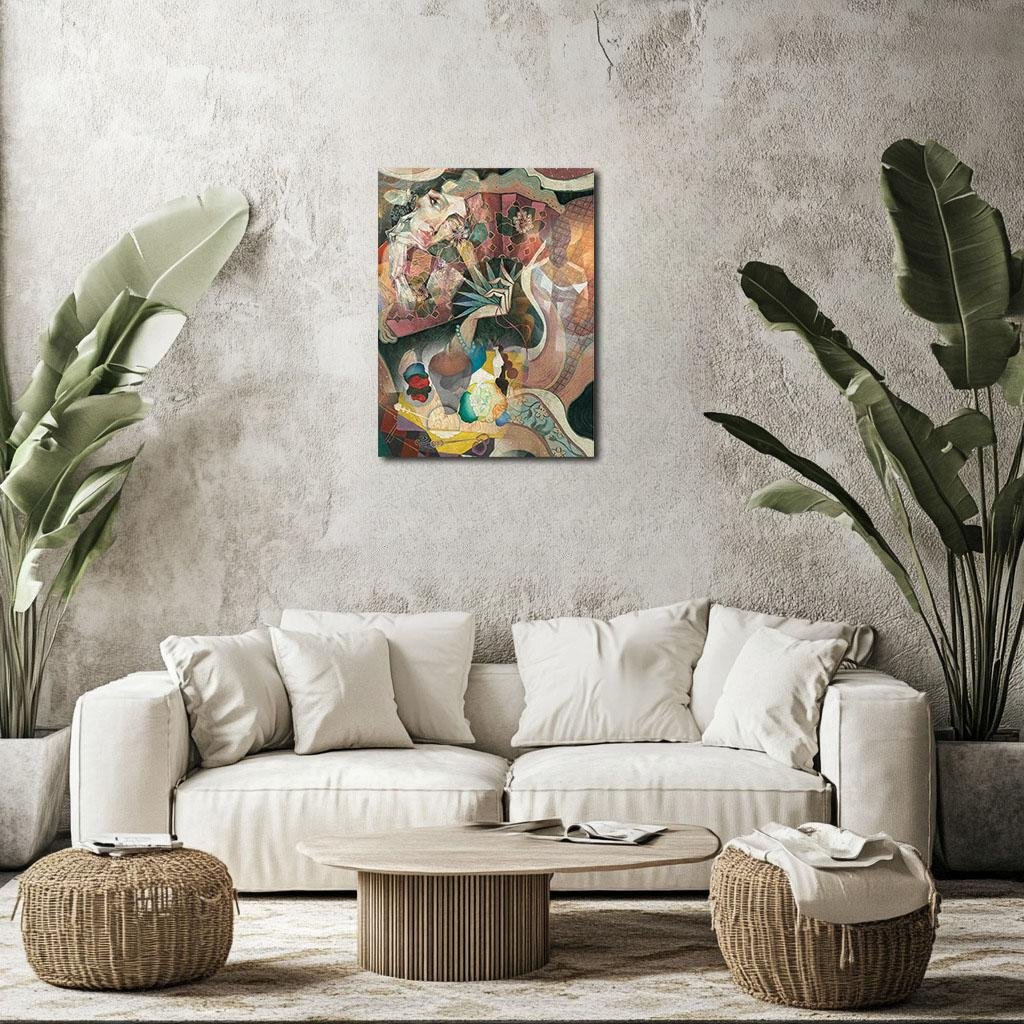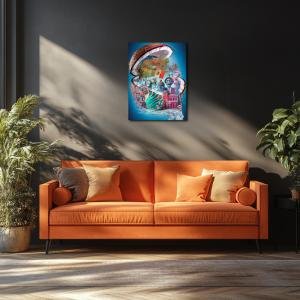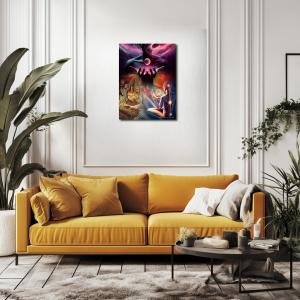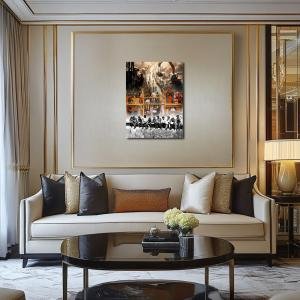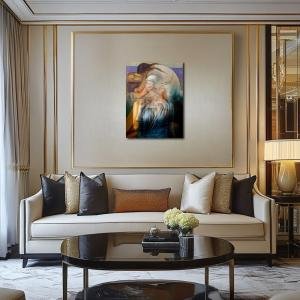Stillness in Motion: A Devotional Fan of Nature and Identity
Stillness in Motion reinterprets Diego Rivera’s No. 9, Nature Morte as a symbolic, textile-rich meditation on feminine identity, ritual, and memory. At its core is a delicate hand holding a fan, surrounded by floral motifs, layered garments, and flowing abstract forms. A subdued palette of pinks, greens, and jewel tones evokes cultural ritual and emotional inheritance. Through its surreal composition and richly textured aesthetic, the piece transforms still life into a quiet ceremonial dance of concealment, heritage, and poetic motion.
Please see Below for Details…
Hotline Order:
Mon - Fri: 07AM - 06PM
404-872-4663
This reimagining of Diego Rivera’s No. 9, Nature Morte spirals away from conventional still life into a symbolic tapestry of cultural ritual, layered identity, and feminine introspection. Titled Stillness in Motion , this piece unfolds like an ornate fan—each rib a whisper from different eras, textures, and selves. At its center is not a bowl of fruit or vase of flowers, but a hand—a poised, deliberate gesture of concealment and expression, holding a fan whose design echoes Moorish patterns and floral medallions.
The human presence here is both spectral and intimate. A woman’s tilted face drifts through the layered fabrics and patterns, not as a singular identity but as a composite spirit. She appears embroidered into the architecture of the scene, half hidden beneath the folds of silk and paper, as if both veil and revelation. Her gaze—soft and sidelong—reminds us of the quiet power that Rivera often placed in the feminine, not just as muse but as symbol of nature itself.
Where Rivera once presented objects, this work presents suggestions. It is less about a singular interpretation and more about flow. Layers of textile, inked linework, abstract floral motifs, and fragments of traditional garments spiral together in a choreography of memory. A necklace of jade and pearl descends not toward wealth but toward ritual—a devotional offering to one’s past selves.
Color in Stillness in Motion plays with dualities—earth and air, softness and architecture, fluidity and form. Dominant throughout is a nuanced palette of flushed pinks and dusty mauves. These are not the pastels of comfort, but of memory. They speak to aging textiles, well-worn rituals, and the softness of reflection. The pink here breathes of rosewater, of ritual baths and unspoken grief. It is a pink of inner life, of sacred privacy.
Overlaying this base is a network of jewel tones—emerald green, royal blue, marigold, and garnet—each fleeting, appearing as fleeting inflections across the fan, across fabric creases, across shadows of thought. They are not accents, but echoes. These colors represent cultures folded together: Middle Eastern ornament, Asian fan craft, European lacework, Mesoamerican color fields. They vibrate with the plurality of Rivera’s vision—unity through multiplicity.
The fan itself, centered within the hand, unfolds in hues of sea-gray and lavender. It slices diagonally across the canvas like a metaphorical bridge between silence and self-expression. Its patterns—part floral, part geometric—suggest both spiritual design and architectural constraint. It is the core device of the piece: the fan that hides, that cools, that dances, that reveals.
The woman’s hand, pale green and elegantly jointed, evokes not realism but expressionism. It is a hand of ritual—not one reaching for objects, but one creating symbolism. Around it spirals a ring of symbolic detail: fruit-like forms in dusky crimson and dusty gold, silk knots of plum and beige, floral stems that flicker like forgotten poetry. These are the nature mortes of Rivera transfigured—not things to be displayed, but symbols to be interpreted, internalized.
When I created Stillness in Motion , I imagined still life not as a study of arrangement, but as a meditation on what cannot be placed. I thought of gestures passed down through generations, of women fanning themselves at dusk while holding centuries of expectation in their silence. The still life here becomes a ceremony—of layered identity, of concealment and emergence, of patterns pressed into skin and spirit.
In Rivera’s world, nature morte was often rooted in the tangible: food, tableware, books. Here, the tangibility dissolves into textile and metaphor. The only ‘object’ is the fan—and even that is not fixed. It becomes portal, protector, performer. The stillness of the piece is not inert—it is the stillness of deep breath before movement, the hush before revelation.
Add your review
Your email address will not be published. Required fields are marked *
Please login to write review!
Looks like there are no reviews yet.

